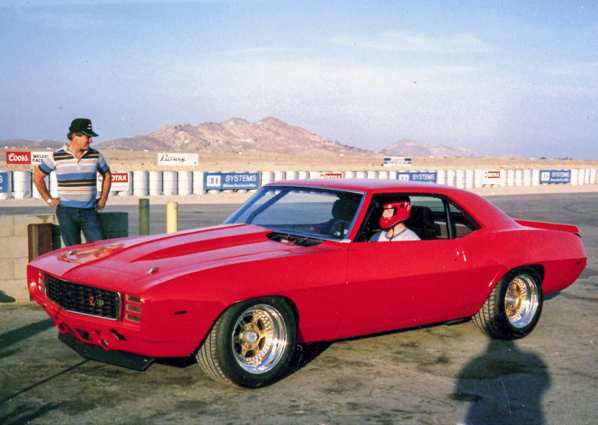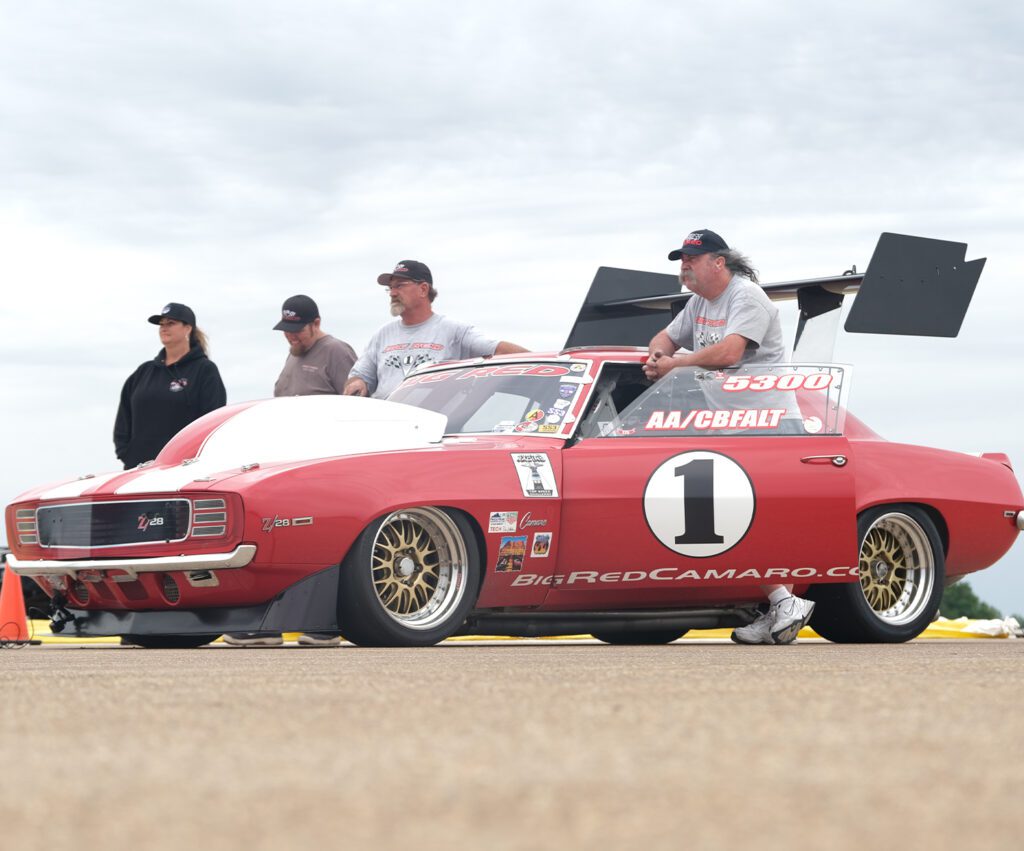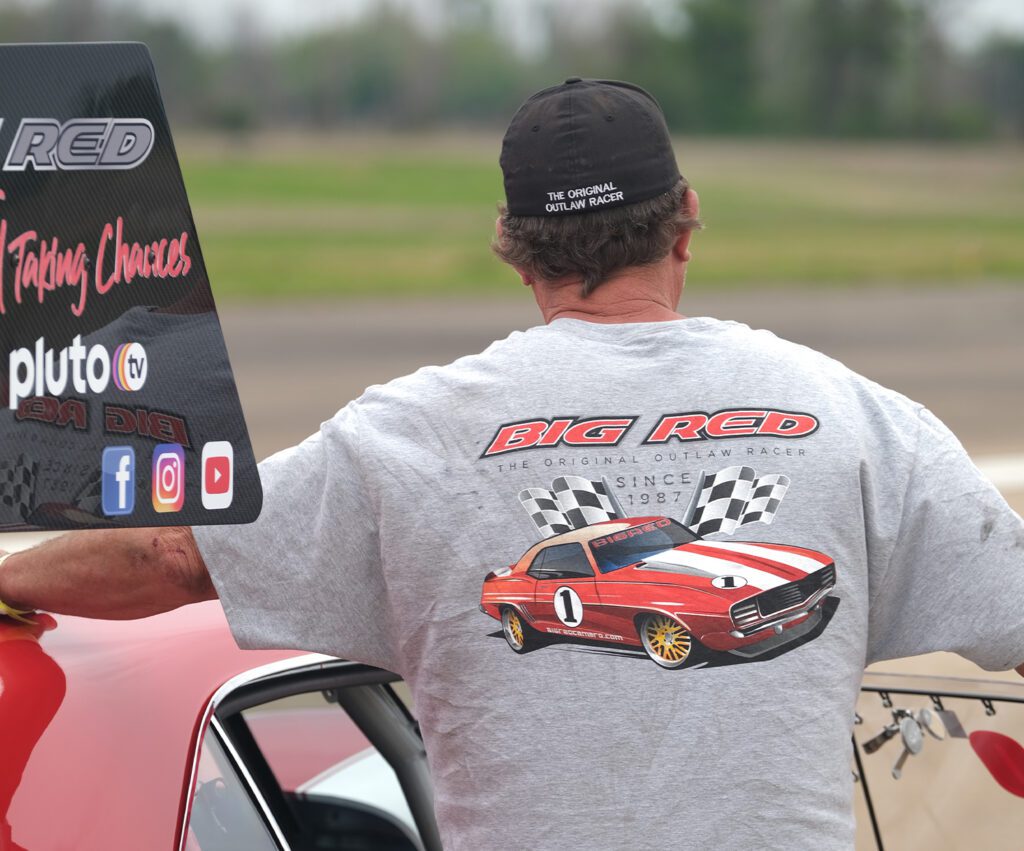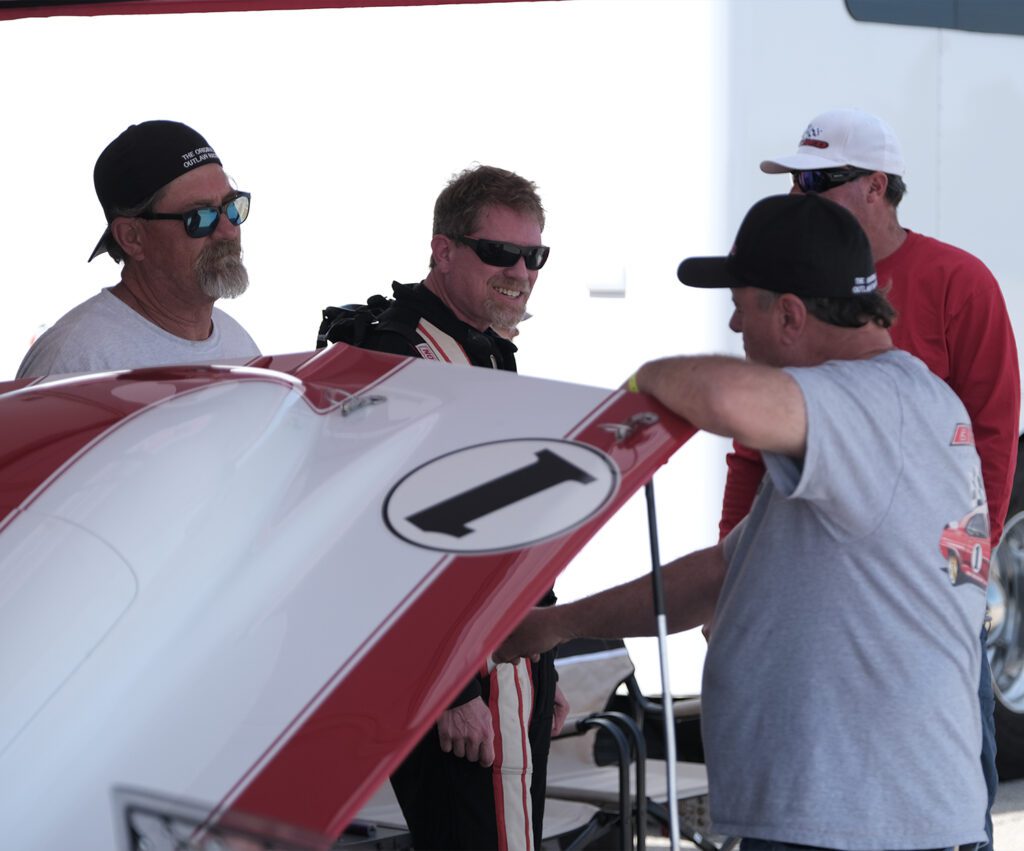Big Red History 2021

For the new car, less horsepower simply was not an option. Once you make a decision like that, you have to figure out a way to keep that beast under the hood in between the lines. Father and son were going to have to think long and hard about safety. The lesson from La Carrera Classica was that dropping a race-car engine into a factory Camaro simply wouldn’t work. But part of the magic, RJ insisted, was that he didn’t want to drive a race car that just looked like a ’69 Camaro, but one that actually was a ’69 Camaro. It was a critical directive that added that spark to the new car’s legend. It would be a car that everyone could relate to, like the one they had driven themselves and worked on; something they knew. The car would be christened “Big Red” and it wouldn’t be a glossy, pretentious starlet on the silver screen, it would be the drop-dead-gorgeous girl next door.More than a beauty, the Gottliebs wanted a wolf in sheep’s clothing to put the owners and drivers of the high-end European sports cars at ease when the fire breathing race car lurking under that Camaro skin came storming out of the gate. Underneath that skin, it
truly was going to be something else. Bill Osborne had a hell of a project on his hands. It’s relatively easy to drop the shell of a car onto a racing chassis. What Bill did was actually build the racing chassis into the\ original GM/ Fisher body of the car. And why not? The ’69 Camaro is an awesome vehicle.
The ’69 Camaro is an awesome vehicle. The floorpan was altered and trimmed to accommodate the new frame, which, according to All Chevy magazine, had rollbars “the size of Arnold Schwarzenegger’s biceps.” Still, the general design of the cockpit was largely retained, including the original dash assembly that had a working glovebox and gauge cluster. The illusion wasn’t
perfect, of course. The 11-inch setback mounting of that monster engine was pretty obvious, but Dan insisted that they paint that fancy (and expensive) all-aluminum block GM orange so he could point, and say, “look, it’s just a stock 427 iron block.” And then he’d chuckle a little bit Early garage photos of the car show a raw steel cage, stripped of any paint. A massive Modine radiator was installed with racing front sway bushings and a cross brace in front of the engine. As Bill continued to work, the motoring press couldn’t help but take notice. In the September 1987 issue of Hot Rod magazine, the Mexico crash was mentioned in its one-page coverage of the event, which hinted at a “re-birth,” and the Gottliebs possibly building another “audacious” Camaro.
And it was. It was also a work in progress. In photos of Big Red’s maiden drive at Willow Springs racetrack, it was without trim, stripes and some of the soon-to-be familiar hardware — including the extra diagonal braces on the main loop of the cage. Big Red was taking shape into something fans would .recognize, the gold center wheels and a shiny coat of red as bold as the engineering, just waiting for those classic white Z/28 stripes.


Introduction to the Year’s Endeavors
The year 2021 was filled with anticipation as the Big Red Camaro team prepared to face a series of diverse and challenging events across the United States. From asphalt airstrips to the salt flats of Bonneville, each event was a testament to Big Red’s enduring legacy and the team’s relentless pursuit of speed.
MARCH: SHIFT SECTOR CALIFORNIA AIRSTRIP ATTACK
The year kicked off with a strong start at the Shift Sector California Airstrip Attack in Coalinga. Big Red was among the stars of the show, attracting attention for its power and speed. Competing against a lineup of some of the fastest cars, Big Red demonstrated why it remains a crowd favorite, as highlighted by extensive coverage on Torq Talk.



PERFORMANCE INSIGHTS AND MEDIA COVERAGE
Torq Talk provided an in-depth look at this new form of land speed racing, focusing on how Big Red adapts to different racing formats and continues to push the boundaries of what’s possible on four wheels. The coverage offered fans a closer look at the engineering and strategic planning behind Big Red’s performance.
MAY: ECTA ARKANSAS MILE
In May, Big Red traveled to Arkansas for the ECTA Arkansas Mile. Here, it achieved a top speed of 249 mph, showcasing Big Red’s consistent capability in different settings.






AUGUST: INDY AIRSTRIP ATTACK
The Indy Airstrip Attack in August saw Big Red participating in Indiana, where it recorded a top speed of 213.27 mph. The event’s official wrap-up on the Airstrip Attack website praised Big Red’s enduring appeal and the skill of its team, noting how each run adds to its storied history.

SEPTEMBER: BONNEVILLE SPEED WEEK
One of the year’s highlights was participating in the Bonneville Speed Week in Utah. This prestigious event, covered extensively by Motor Trend, allowed Big Red to compete on the legendary salt flats, a completely different and challenging environment. The team tackled unique conditions that tested both the car and the crew’s adaptability and engineering skills.
August: Indy Airstrip Attack
The Indy Airstrip Attack in August saw Big Red participating in Indiana, where it recorded a top speed of 213.27 mph. The event’s official wrap-up on the Airstrip Attack website praised Big Red’s enduring appeal and the skill of its team, noting how each run adds to its storied history.
September: Bonneville Speed Week
One of the year’s highlights was participating in the Bonneville Speed Week in Utah. This prestigious event, covered extensively by Motor Trend, allowed Big Red to compete on the legendary salt flats, a completely different and challenging environment. The team tackled unique conditions that tested both the car and the crew’s adaptability and engineering skills.
Challenges and Achievements
Throughout the year, Big Red faced various challenges, from adjusting to different race conditions to optimizing performance for diverse tracks. Each event provided valuable insights and experiences, contributing to the team’s growth and Big Red’s evolution.
-
Early Racing Adventures
-
La Carrera Classica I
-
Big Crash as La Carrera II
-
Triumph at La Carrera III
-
Dominatation at La Carrera IV
-
Victory again at Silver State
-
Victory at Nevada Open
-
International Acclaim
-
Reviving the Legend
-
Big Red in Fast & Furious
-
205 mph at Texas Mile
-
210 mph at Mojave Mile
-
Victory at Silver State
-
234 mph at Mojave Magnum
-
227 mph at Bonneville
-
Cover of Hot Rod Magazine
-
238 mph at Mojave Mile
-
Big Red 100% rebuilt
-
Devastating Fire
-
252 mph at Texas Mile
-
259 mph at Bonneville
-
256 mph Harvest 1.5 Mile
-
251 mph at Spaceport Half Mile
-
249 mph Arkansas Mile
-
Domination at Big Bore Bash
-
Domination at TX2K Street Racing
-
Upcoming Races & Events